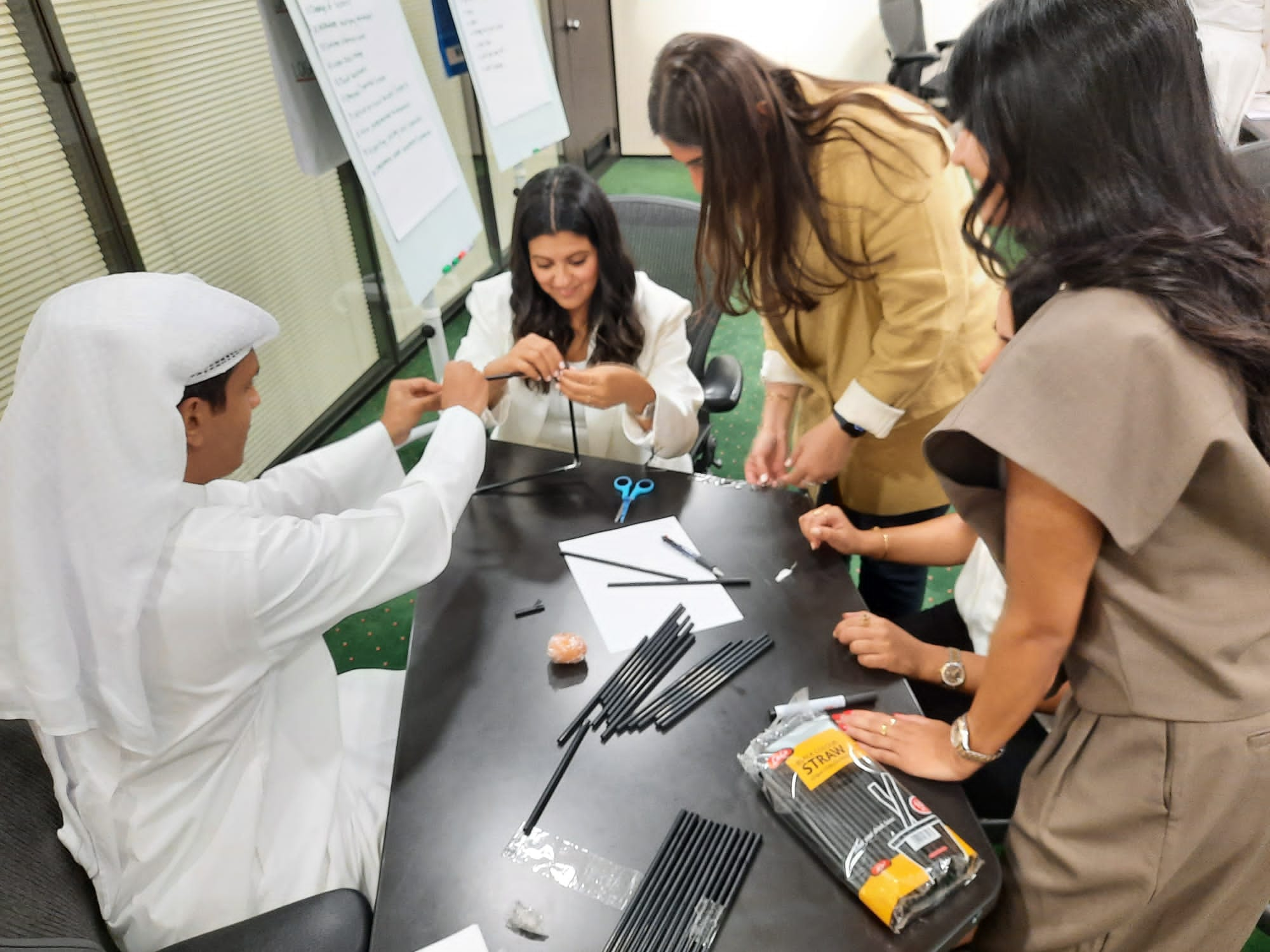Creative Problem Solving Training
For Organisations Only
In-house training
- Face-to-face (flexible structure <15 people)
- Live virtual (flexible structure <15 people)
- Conferences and events (<500 people)
- Webinar (1hr introduction <1000 people)
- With or without actors
- Fully customisable
Creative Problem Solving – 2 Days
This dynamic course focuses on using creativity within the problem-solving process. It is equally suited to those who would like to learn the problem-solving process itself and those who would like to become more creative with their problem solving and decision-making practices.
The course includes conventional problem-solving tools such as fishbone analysis, systematic problem mapping and criterion analysis, but goes one step further and introduces creative concepts such as SCAMPER, bubble sort and other techniques. The creative approach to problem solving gives participants the skills to generate new and innovative solutions, which modern businesses need to stay ahead of the competition.
Course Content
Creative thinking in problem solving
What are the benefits of being creative in any problem-solving situation? How to combine the creative, as well as the logical when assessing solutions. Participants are provided with formal input and group discussion to understand just how to do that. Understanding contributions from the left and right sides of the brain adds to the learning to ensure this session is interesting as well as inspiring.
Defining problems properly
Defining and recognising problems effectively is the first stage of this step-by-step process. Participants are asked to bring a few specific problems which are appropriate and current to their management roles. As we step through the different stages of the process, participants apply the learning to their individual work-based issues. This very practical session concludes by challenging assumptions made about the problem.
Problem solving techniques
Participants are stepped through a range of practical problem-solving techniques appropriate to deal with a range of problems, including fishbone analysis, systematic problem mapping and criterion analysis. The session then moves into group problem solving techniques for example creating solutions, finding alternative solutions, evaluating solutions to ensure the right solution is applied to the problem.
Having the right mindset
How to create an idea generating activity, understanding the importance of creating the right environment for effective problem solving and the importance persistence plays in problem solving are highlighted to sit along with the problem-solving process to ensure the picture is complete. Participants also explore the necessity of unlearning and relearning to acceptance new solutions.
Problem solving practical session
Using their own specific problems, participants work together in small groups to apply the learning and generate creative solutions. Following a thorough review of the learning activity, participants are invited to think forward and prepare an action plan to support the transfer of learning from the training room to the workplace.
Let's get started...
Contact us with your availability for a call and we will send you a proposal, programme outline and quotation for your learning and development project.
Use Actors in Your Training
Through clever script writing, goose-bump inducing delivery and professional facilitation we can bring so much to life. We stimulate emotion, penetrate the long-term memory and create lasting change.
When we use live drama, we are able to have the actors play out the scenario and then be hot seated for the audience to ask them questions whilst they remain in character. Hot seating works so well because actors work with a pre-rehearsed backstory, so they are able to respond in character. They progressively reveal unexpected elements of their story that will not have previously been told. It can bust assumptions that the audience might have made based on the scenario (situation) but not fully understanding the impact at first sight.
Using actors in this programme enables us to bring to:
- See a typical situation from a different perspective
- Give attendees a chance to challenge the actors whilst they are still in character
- Demonstrate that things aren’t always what they seem at first glance
- Provide delegates with an opportunity to test out alternative ways of approaching different situations
- Create an experience which stays in the long-term memory
Case Study

Kuwait Fund for Arab Economic Development
Upskilling engineering, architectural and bio-medical graduates“I want to take the chance to thank you again for this wonderful course, it’s been my absolute pleasure and honour to be trained by you. I honestly learned a lot during this week, I hope we will keep in touch.”
READ CASE STUDY